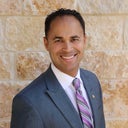Answers (8)
From board-certified doctors and trusted medical professionals

Dr. Kenneth D. Steinsapir, MD
Oculoplastic Surgeon, Board Certified in Ophthalmology
Answer
Dr. Ahad Mahootchi, MD
Oculoplastic Surgeon, Board Certified in Ophthalmology
Answer
Dr. Christopher I. Zoumalan, MD, FACS
Oculoplastic Surgeon, Board Certified in Ophthalmology
Answer
Dr. Edwin Ishoo, MD
Facial Plastic Surgeon, Board Certified in Otolaryngology – Head and Neck Surgery
Answer
Dr. Emilio M. Justo, MD - Account Suspended
Board Certified Ophthalmologist
Answer
Dr. Sara A. Kaltreider, MD (retired)
Oculoplastic Surgeon, Board Certified in Ophthalmology
Answer
